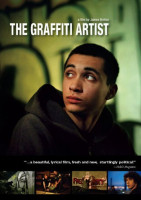The Graffiti Artist Filming Locations

Where was The Graffiti Artist filmed? The Graffiti Artist was filmed in 2 locations across United States in the following places:
The Graffiti Artist Filming Locations
Portland, Oregon’s largest city, sits on the Columbia and Willamette rivers, in the shadow of snow-capped Mount Hood. It’s known for its parks, bridges and bicycle paths, as well as for its eco-friendliness and its microbreweries and coffeehouses. Iconic Washington Park encompasses sites from the formal Japanese Garden to Oregon Zoo and its railway. The city hosts thriving art, theater and music scenes.
Seattle, a city on Puget Sound in the Pacific Northwest, is surrounded by water, mountains and evergreen forests, and contains thousands of acres of parkland. Washington State’s largest city, it’s home to a large tech industry, with Microsoft and Amazon headquartered in its metropolitan area. The futuristic Space Needle, a 1962 World’s Fair legacy, is its most iconic landmark.
The Graffiti Artist (2004)
Adrift in a lush, nocturnal urban landscape, Nick is a post-modern urban hero asserting his anarchistic agenda on the endless maze of virgin exterior walls that comprise downtown Seattle and Portland. For writer/director Bolton's lonely "tagger" protagonist, the vast wall surfaces of deserted alleys and trainyards are at once a daunting symbol of capitalist oppression and a texturally rich, seamless tableau ripe for exploitation to amplify his artistic dialectic of anger and rebellion. His own virtually anonymous existence seemingly only secondary to the painted surfaces and "rupture the system" manifesto which more poignantly evidence his presence, Nick's prodigious solo graffiti output is interrupted by friendship with another young tagger. Their communication begins as less verbal than a kind of shared graphic tour de force; their enormous collaborative graffiti murals appear to emerge as the unmistakable offspring of their kindred spirit. But eventually their assumptions about one another are disproved as political, emotional and ethical issues arise which cause their relationship to dissolve into the background of urban detritus, and the artists themselves emerge only further atomized and alienated by the experience. Compelling themes, sensitive performances, and luscious visuals define this film which is a revealing immersion into the experiential reality of those daring to make their art in a socially condemned arena. For a film ostensibly focusing on manipulated surfaces, Bolton's cinematic artistry probes deep into the consciousness of the "tagger" and "graffiti artist" sub-culture.
